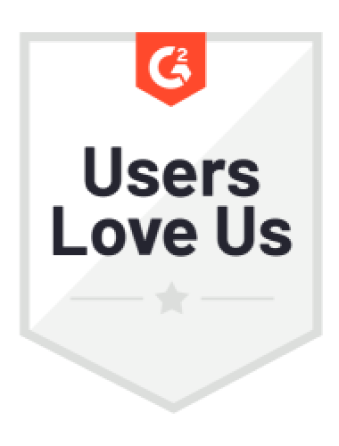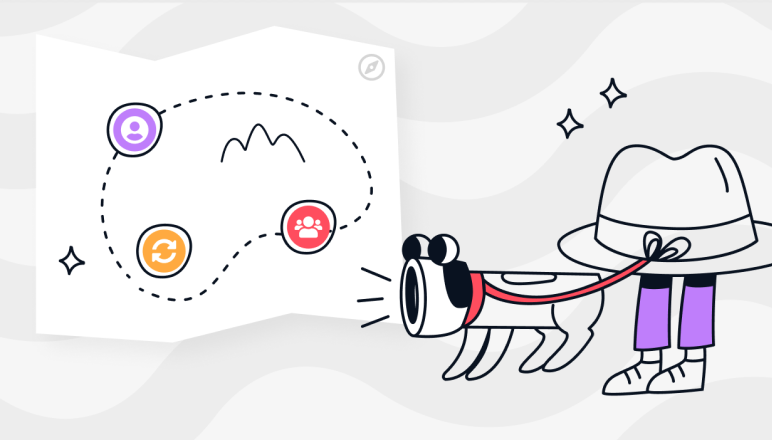Data Catalog Tool Comparison: Collibra vs. Secoda
Businesses are constantly seeking ways to effectively manage and leverage their vast amounts of data. This is where data catalog tools come into play, providing a centralized platform for organizing, governing, and discovering data assets. In this article, we will delve into two popular data catalog tools: Collibra and Secoda. By comparing their features, functionalities, and overall performance, we aim to help you make an informed decision on which tool is best suited for your business needs.
Understanding Data Catalog Tools
Data catalog tools play a vital role in modern businesses, enabling users to locate, understand, and utilize data assets efficiently. These tools act as a bridge between data producers and data consumers, making it easier to discover and access relevant data sets. Additionally, they provide crucial metadata, such as data lineage, quality, and ownership, which are vital for ensuring data integrity and governance.
By incorporating data catalog tools into their workflows, organizations can streamline their data management processes, improve collaboration between teams, and ensure compliance with data regulations. With the exponential growth of data volumes in businesses today, having a robust data catalog tool has become a necessity rather than a luxury.
The Role of Data Catalog Tools in Business
Data catalog tools serve several key purposes. Firstly, they enhance data discovery, allowing users to find relevant datasets quickly. With advanced search capabilities and intuitive user interfaces, these tools simplify the process of locating and accessing valuable data, ultimately enabling data-driven decision-making.
Furthermore, data catalog tools facilitate data governance and stewardship. They provide a centralized platform for documenting, standardizing, and ensuring the consistency of data assets. With features like data lineage and data quality assessment, businesses can track the origin and credibility of their data, establishing trust and increasing its value.
Lastly, data catalog tools foster collaboration and knowledge sharing. By providing a common platform for different teams and departments to access and contribute to the data catalog, these tools break down data silos and promote cross-functional collaboration. This not only improves productivity but also enables organizations to harness the full potential of their data assets.
Key Features of Effective Data Catalog Tools
Effective data catalog tools offer a range of features that empower users to manage and utilize their data assets effectively. Let's explore some of the key features to look for:
- Data Discovery: Robust search capabilities and metadata tagging make it easy to locate and access relevant datasets.
- Data Lineage: Providing information on the origin, transformations, and relationships of data, data lineage ensures data traceability and establishes trust.
- Data Quality Assessment: Assessing the quality, completeness, and accuracy of data helps users make informed decisions and avoid potential pitfalls.
- Data Sharing and Collaboration: Enabling seamless collaboration and knowledge sharing across teams and departments drives innovation and improves efficiency.
- Data Governance: Features like data stewardship, access controls, and data policy enforcement ensure compliance and data integrity.
Introduction to Collibra
Collibra is a leading data catalog tool that has gained popularity for its comprehensive features and user-friendly interface. Let's dive into what makes Collibra an attractive choice for businesses seeking a robust data catalog solution.
Overview of Collibra's Features
Collibra offers a wide range of features that streamline data management processes and enhance collaboration. Its intuitive user interface makes it easy for users to navigate and access relevant datasets, promoting efficiency and data discovery. Furthermore, Collibra provides extensive metadata capabilities, allowing users to capture and track important information about data assets, ensuring data lineage and quality.
One standout feature of Collibra is its data governance capabilities. The tool supports data stewardship workflows, enabling organizations to assign ownership and responsibility for data assets. This ensures that data is governed and managed effectively, maintaining compliance and maximizing its value.
Pros and Cons of Collibra
Like any tool, Collibra has its strengths and weaknesses. Some advantages of using Collibra include its robust data governance features, user-friendly interface, and comprehensive metadata capabilities. These features, combined with its intuitive search capabilities, allow users to easily find and utilize the right data.
However, it's important to consider some potential drawbacks as well. Collibra's pricing structure may be a deterrent for smaller organizations with limited budgets. Additionally, while Collibra's user interface is user-friendly, it may require some initial training and onboarding to fully grasp its functionalities.
Introduction to Secoda
Secoda is another prominent player in the data catalog tool space, offering a range of features designed to simplify data management and discovery. Let's explore what makes Secoda a contender in the market.
Overview of Secoda's Features
Secoda differentiates itself with its advanced artificial intelligence capabilities, particularly in data discovery and search features. By leveraging machine learning algorithms, Secoda can understand user preferences and behavior, providing personalized recommendations for relevant datasets. This enhances the speed and accuracy of data discovery, ultimately enabling users to make informed decisions quickly.
In addition to its AI-driven capabilities, Secoda offers robust data lineage and metadata management features. These capabilities allow users to trace data origins, understand data transformations, and assess data quality. Combined with its collaboration tools, Secoda provides an all-in-one solution for seamless teamwork and knowledge sharing.
Pros and Cons of Secoda
Secoda brings several key advantages to the table. Its AI-powered data discovery capabilities ensure efficient and accurate results, saving users valuable time and effort. The tool's user-friendly interface and collaboration features also contribute to its appeal, making it easy for teams to work together effectively.
However, there are a few aspects to consider before opting for Secoda. While the AI-driven recommendations are beneficial in many cases, there could be instances where the tool may not fully understand the context or requirements. Additionally, the pricing structure may not be suitable for organizations operating on limited budgets.
In-depth Comparison: Collibra vs. Secoda
Now that we've explored the features and strengths of Collibra and Secoda individually, let's dive deeper into a comprehensive comparison of these two data catalog tools. By assessing several crucial aspects, we aim to help you make an informed decision best suited to your business requirements.
Comparing User Interface and Usability
Both Collibra and Secoda offer user-friendly interfaces designed to simplify the data discovery and management process. Collibra's interface is intuitive and easy to navigate, making it accessible to users of all technical backgrounds. Similarly, Secoda's interface prioritizes simplicity, allowing users to quickly locate and access relevant datasets.
However, Collibra's interface may require some initial training and familiarization due to its extensive feature set. In contrast, Secoda's AI-driven capabilities enhance usability by providing personalized recommendations, ensuring a smooth and intuitive user experience.
Data Management Capabilities Comparison
When it comes to data management capabilities, both Collibra and Secoda offer robust features for data lineage, metadata management, and data quality assessment. Collibra's comprehensive metadata capabilities make it a strong contender in this aspect. However, Secoda's use of artificial intelligence in data discovery and search provides a unique advantage, particularly for organizations dealing with vast and complex datasets.
Ultimately, the choice between the two tools will depend on specific business requirements and preferences. Organizations focused on data governance and comprehensive metadata management may lean towards Collibra, while those seeking advanced AI-driven data discovery may find Secoda more appealing.
Security Features: Collibra vs. Secoda
With the increasing importance of data security, it's crucial to evaluate the security features offered by data catalog tools. Both Collibra and Secoda prioritize data protection through features like access controls, encryption, and data policy enforcement.
Collibra provides granular access controls, allowing organizations to define user roles and permissions, ensuring data is accessed only by authorized personnel. Secoda, on the other hand, emphasizes data encryption and secure authentication protocols to safeguard sensitive data.
When it comes to security, it's important to assess specific business needs and compliance requirements to make an informed decision.
Pricing Structure: Collibra vs. Secoda
One of the significant considerations in selecting a data catalog tool is the pricing structure. Collibra's pricing is typically tailored to each organization's specific needs, which means it may be more suitable for larger enterprises with sufficient budgets. Smaller organizations may find it challenging to justify the cost.
Secoda's pricing structure also varies depending on factors such as the volume of data and the number of users. While it may still be an investment, its flexibility allows organizations to adapt based on their current needs and scale as they grow.
Making the Right Choice for Your Business
Choosing the ideal data catalog tool for your business requires a thorough assessment of your specific needs and priorities. Here are some key factors to consider:
Factors to Consider When Choosing a Data Catalog Tool
1. Business Objectives: Define your data management goals and ensure the chosen tool aligns with your business strategy.
2. Usability: Evaluate the user interface, navigation, and overall usability to ensure the tool fits seamlessly into your existing workflows.
3. Scalability: Consider your organization's growth plans and evaluate if the data catalog tool can accommodate your future needs.
4. Integration Capabilities: Assess how well the tool integrates with your existing systems and supports data import/export functionalities.
5. Vendor Support: Consider the level of support and training provided by the vendor to ensure smooth implementation and ongoing assistance.
Assessing Your Business Needs
Take the time to evaluate your organization's specific requirements, including the volume and complexity of your data, the level of data governance needed, and the required collaboration capabilities. With a clear understanding of your needs, you can make an informed decision and select the data catalog tool that best aligns with your business objectives.
Ultimately, the choice between Collibra and Secoda depends on various factors, including the size of your organization, your specific data management requirements, and your budgetary considerations. By carefully evaluating the features, pros, and cons of each tool, you can determine the most suitable option for your business and empower your teams to unlock the full potential of your data assets.
As you consider the right data catalog tool for your business, we invite you to explore the advanced capabilities of CastorDoc. With its seamless integration of governance, cataloging, lineage, and an AI assistant, CastorDoc stands out as a powerful enabler of self-service analytics. It's designed to meet the needs of both data professionals and business users, offering complete control, visibility, and a conversational interface that simplifies data interaction. Experience how CastorDoc can transform your data management and decision-making processes. Check out more tools comparisons here and discover how CastorDoc can elevate your organization's data strategy.
You might also like
Get in Touch to Learn More



“[I like] The easy to use interface and the speed of finding the relevant assets that you're looking for in your database. I also really enjoy the score given to each table, [which] lets you prioritize the results of your queries by how often certain data is used.” - Michal P., Head of Data




.png)
%202.png)

%202.png)

%202.png)
%202.png)
%202.png)

%202.png)


%202.png)

%202.png)


.png)

